WILDLIFE PROTECTION
Western leopard toads on the roads — critically endangered species gets helping hand from conservationists
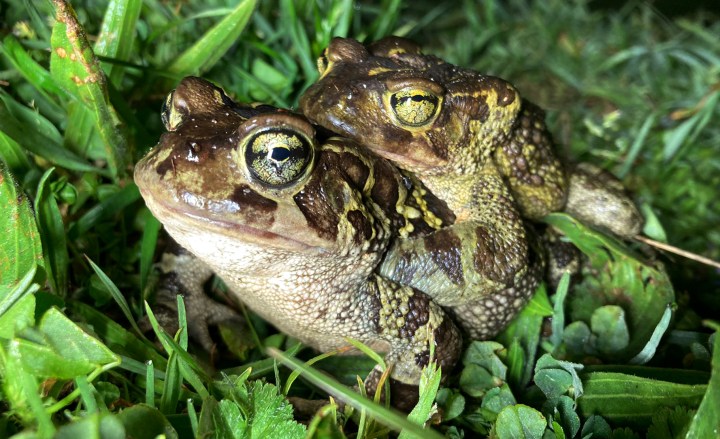
As western leopard toads migrate from the Western Cape’s low-lying areas, vehicles are their greatest threat. Conservationists are stepping in to help the endangered species.
In a lust-filled haze, the critically endangered western leopard toads are completing their annual migration from farms and gardens in low-lying areas of the Western Cape — where the species is endemic — to water bodies where they mate and lay eggs during their breeding season.
It’s a hazardous journey, and their population has declined significantly in recent years as a result of road traffic, habitat loss (largely driven by expanding developments and urbanisation) and climate change. Conservation efforts to protect this species range from constructing tunnels, and community conservation measures, to court action against encroaching developments.
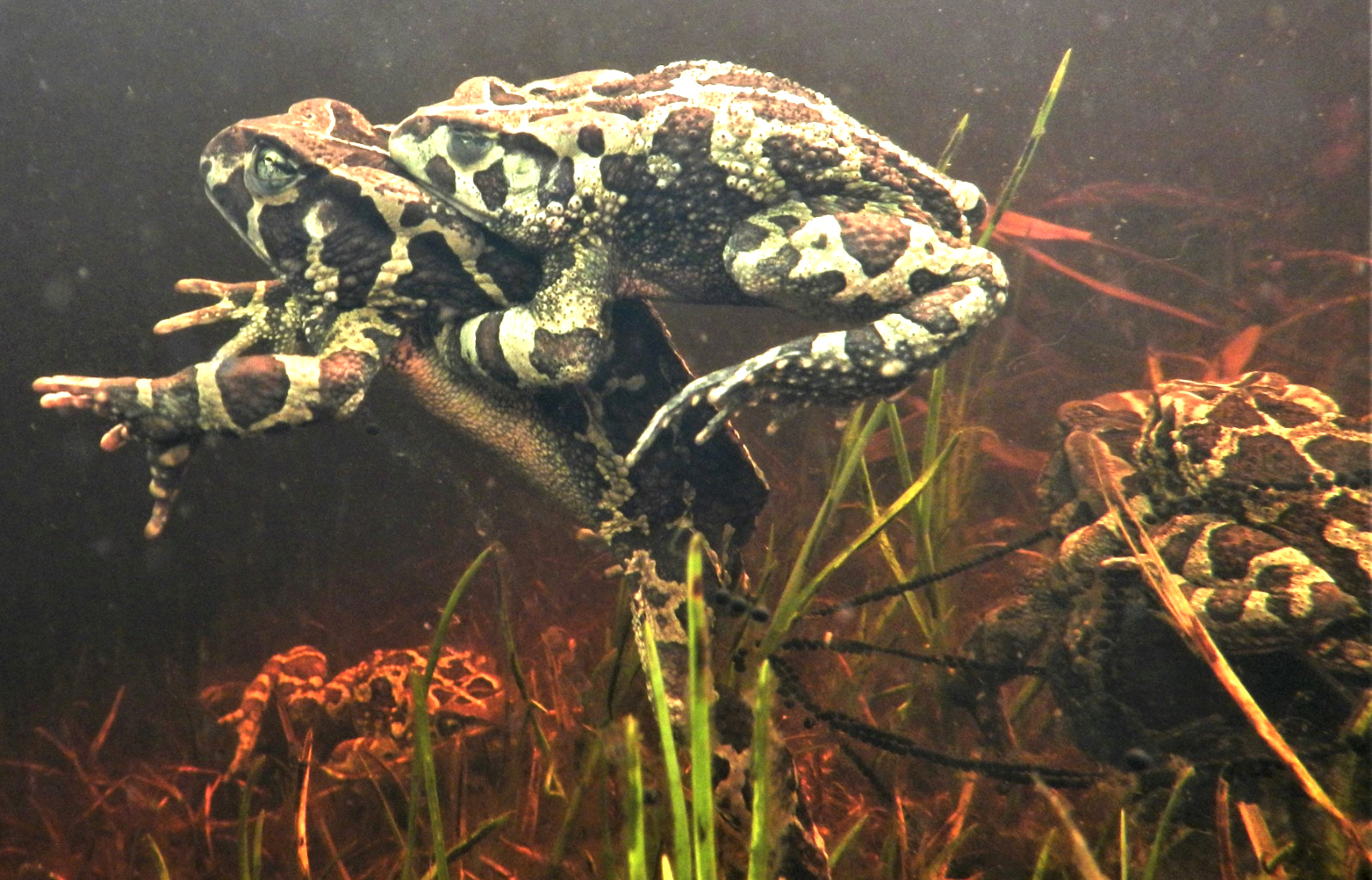
Western leopard roads breeding underwater in the golf course ponds at Clovelly Country Club. Note the strings of eggs. (Photo: Kim Kruyshaa)
Western leopard toads are typically found in low-lying areas of Cape Town’s southern suburbs, the Cape Peninsula and Stanford in a small pocket, including the Cape Flats, Constantia, Grassy Park, Noordhoek, Zeekoevlei, Bergvliet and Observatory. As these toads migrate from gardens in these areas, they are in constant danger from busy roads and urban developments that have encroached on their breeding sites.
Read more in Daily Maverick: Roads not toads: Endangered species at risk after go-ahead for road through Noordhoek wetland
To try to protect this endangered species, tunnels have been built under Peninsula Road in Cape Town, which bisects the False Bay Nature Reserve, to help the toads pass under the road to reach their breeding sites without being hit by cars.
Safe passage
The WLT Underpass Project was initiated by Nature Connect, an environmental education organisation and member of the Western Leopard Toad Conservation Committee, with assistance from donors and the City of Cape Town.
Nature Connect CEO Dr Anthony Roberts said vehicles presented the greatest threat to western leopard toads.
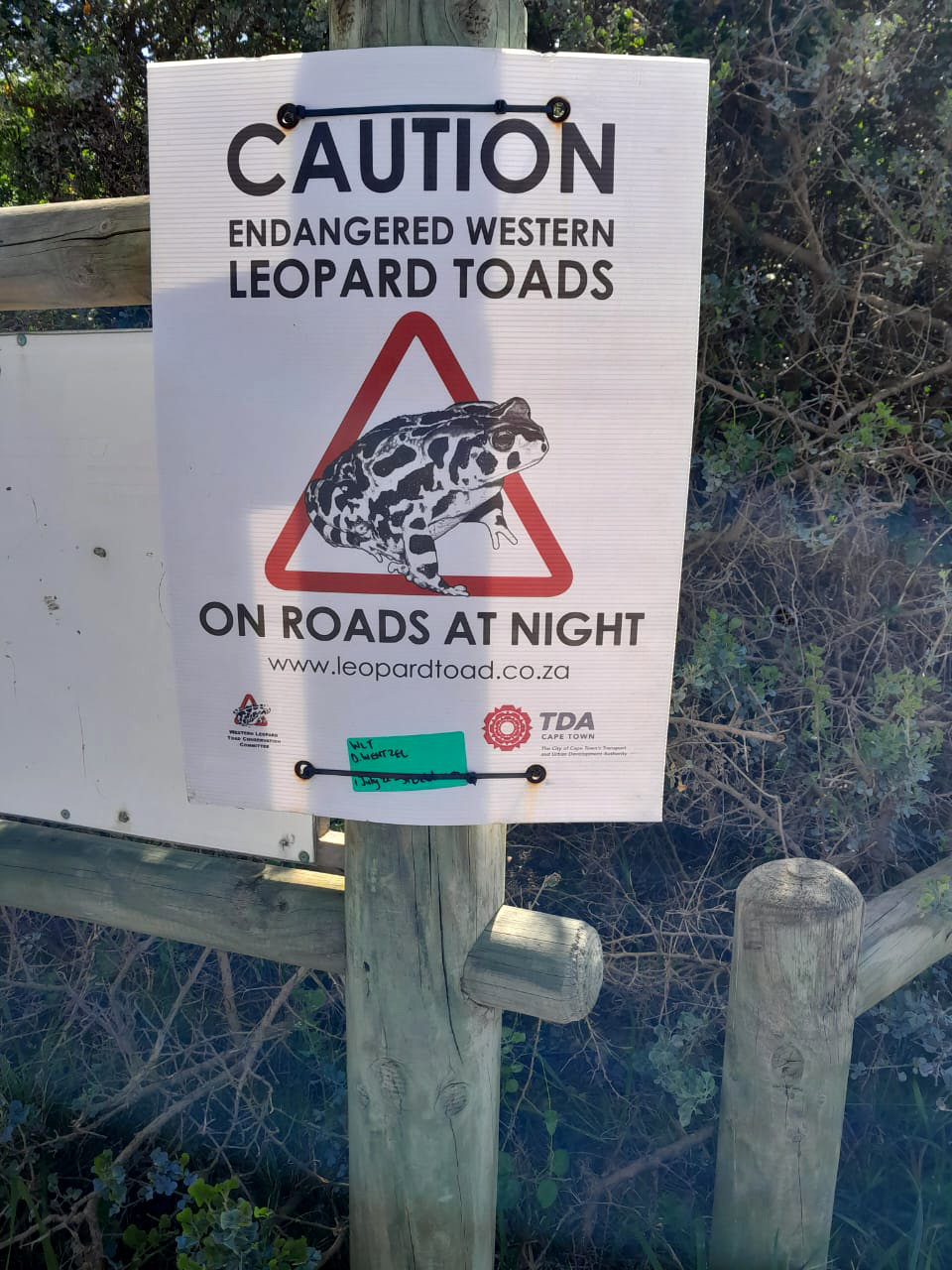
A warning sign found along western leopard toad migration routes, cautioning drivers to slow down and beware of the endangered toads along the road. This sign was in Kommetjie, Cape Town. (Photo: Supplied)
“Given that the toads need to move annually from their summer resting areas to their winter breeding grounds, there is no way of stopping the mass movements of the breeding adults. We therefore needed to consider how to safely get toads from one side of the road to the other,” he said.
The Mayco member for spatial planning and environment in the City of Cape Town, Eddie Andrews, said the statistics had shown a clear decrease in toad deaths on Peninsula Road since the tunnels were constructed in 2021.
Also sitting on the Western Leopard Toad Conservation Committee is ToadNUTs, an affiliate group of the Noordhoek Environmental Action Group that has been working to save the toads from extinction.
This is done through patrolling roads during winter to rescue (and record data of) migrating toads, advocating for the safe passage of the toads to and from their breeding ponds, and educating residents about the toads that live in their gardens.
The co-founder of ToadNUTs, Alison Faraday, said, “Their migration is a hazardous journey for the WLT and they want it to be done quickly. But of course, they’re not aware of the giant predators nowadays, which are cars.”
ToadNUTs area coordinators and volunteers put up cautionary signs on the toads’ migration routes. Faraday said motorists on these routes should not travel at more than 40km/h.
Unfortunately, many people do not adhere to the speed limits or even slow down in the areas where the signs are.
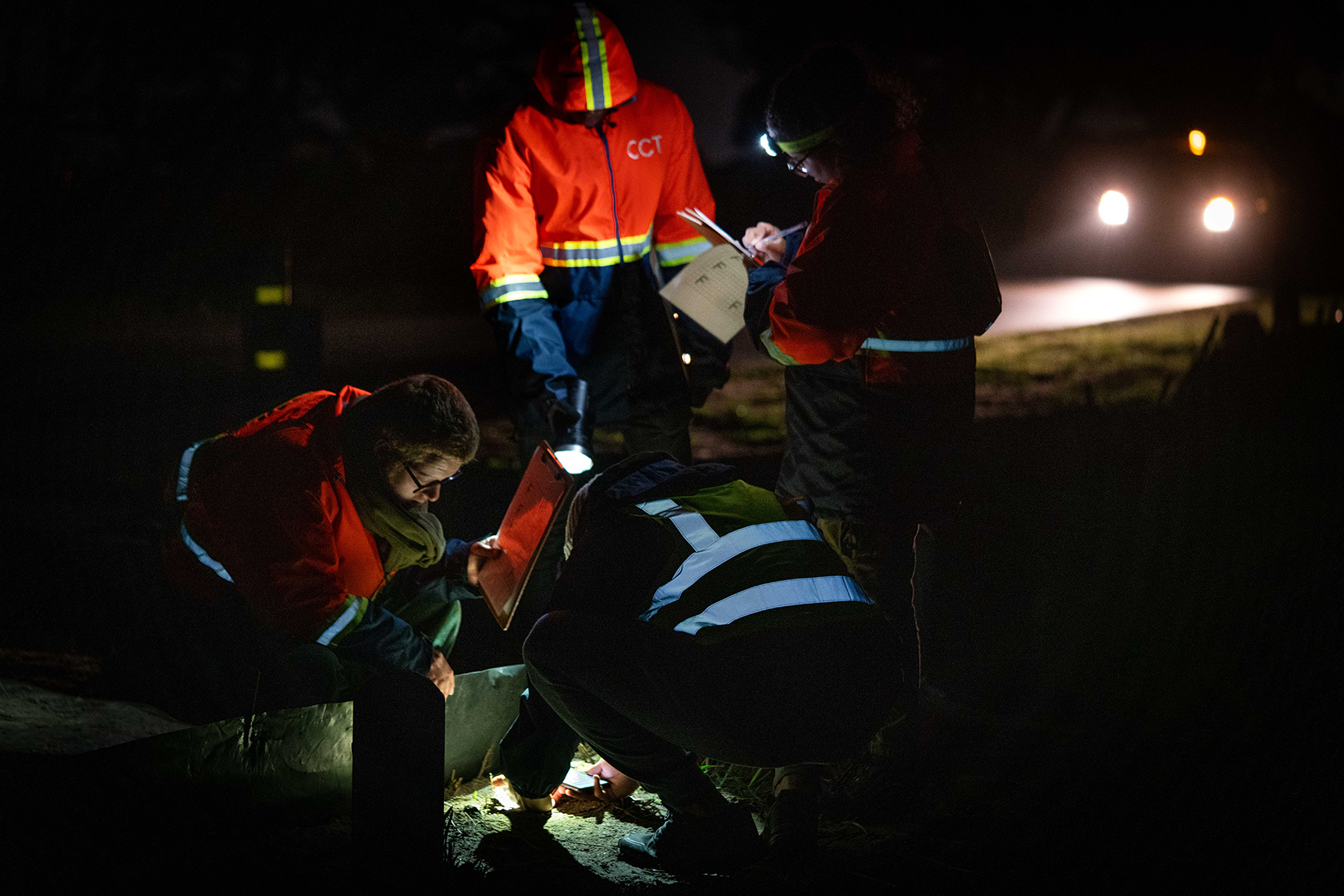
A series of tunnels have been erected along Peninsula Road to help the endangered western leopard toad safely pass under the road and avoid being hit by cars during its breeding season, which takes place during August and September. (Photo: Jeremy Shelton)
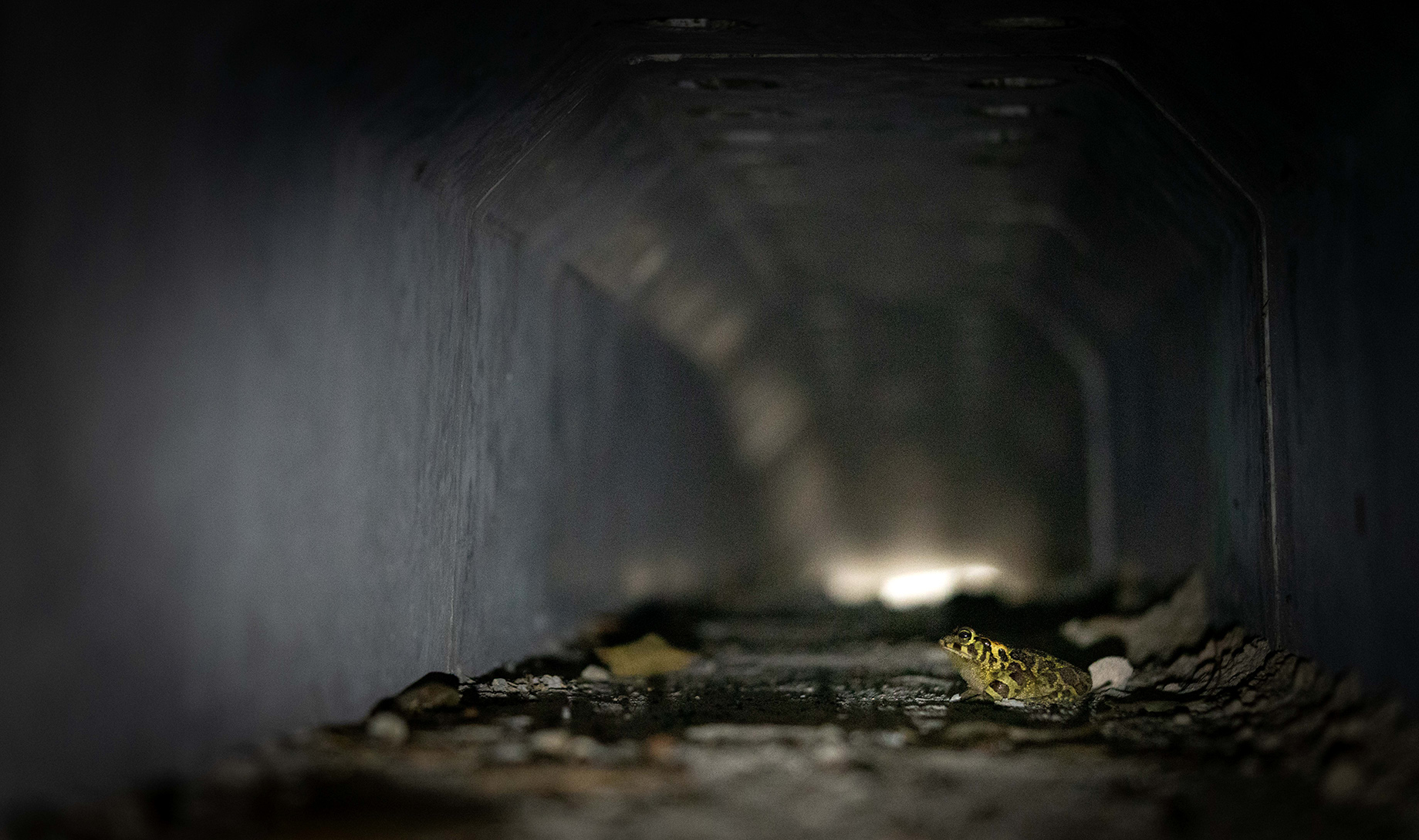
A series of tunnels have been erected along Peninsula Road to help the endangered western leopard toad safely pass under the road and avoid being hit by cars during its breeding season, which takes place during August and September. (Photo: Jeremy Shelton)
Nature Connect’s Roberts said, “Now that we have an effective means of reducing road deaths to toads we hope to find other champions to help us roll the project out to additional areas around the city. Protection of the endangered WLT, one of the few animal species in the world confined almost entirely to an urban boundary, can become our story of success in this ever-changing world.”
The large gravid females have the potential to lay thousands of eggs in a breeding season, and Roberts said the loss of even one large female can have detrimental effects on the population.
Wildlife loss from speeding motorists
A huge amount of wildlife is lost in Cape Town each year from being knocked down by vehicles. Roberts said Cape Town is fortunate to still have areas of natural vegetation scattered through the city, not to mention the Table Mountain National Park.
Through the use of camera traps, Nature Connect has noted that grysbok, porcupines, genets and mongooses move into and through residential areas in Cape Town, mainly at night. They are regularly knocked down by cars.
“We are hopeful that in areas where we place tunnels, these animals will get used to utilising the tunnels to cross the roads, thereby limiting the risk of being knocked down by vehicles,” Roberts said.
Faraday said, “Traffic is definitely the biggest threat to their overall survival, which is why we are fighting the City of Cape Town wanting to put a road through three breeding ponds. We’ve gone through the whole public participation process and despite the fact that there are three crucial breeding ponds at the edge of the Noordhoek Wetlands.”
The Noordhoek Environmental Action Group is taking the City of Cape Town to court in November to try to halt a development along the edge of the Noordhoek Wetlands, which cuts through western leopard toads’ breeding ponds.
Rob Quintas, the City’s Mayco member for Urban Mobility, said the City complied with all of the required processes and environmental approvals for the extension of said road and that this will benefit surrounding communities who are currently facing severe congestion challenges and limited access to neighbouring areas.
“That said, the City has no further detailed comment, given that this matter will be argued in the Western Cape High Court in due course,” said Quintas.
Read more in Daily Maverick: Environment group goes to court to block Noordhoek wetlands road project
The western leopard toad is listed as “endangered in the wild” on the Red Data IUCN list, which affords this species significant protection. However, ToadNUTs is of the view that the proposed link road from Lekkerwater Road through to Noordhoek Main Road (referred to as Houmoed Road), does not take into account the needs of the species.
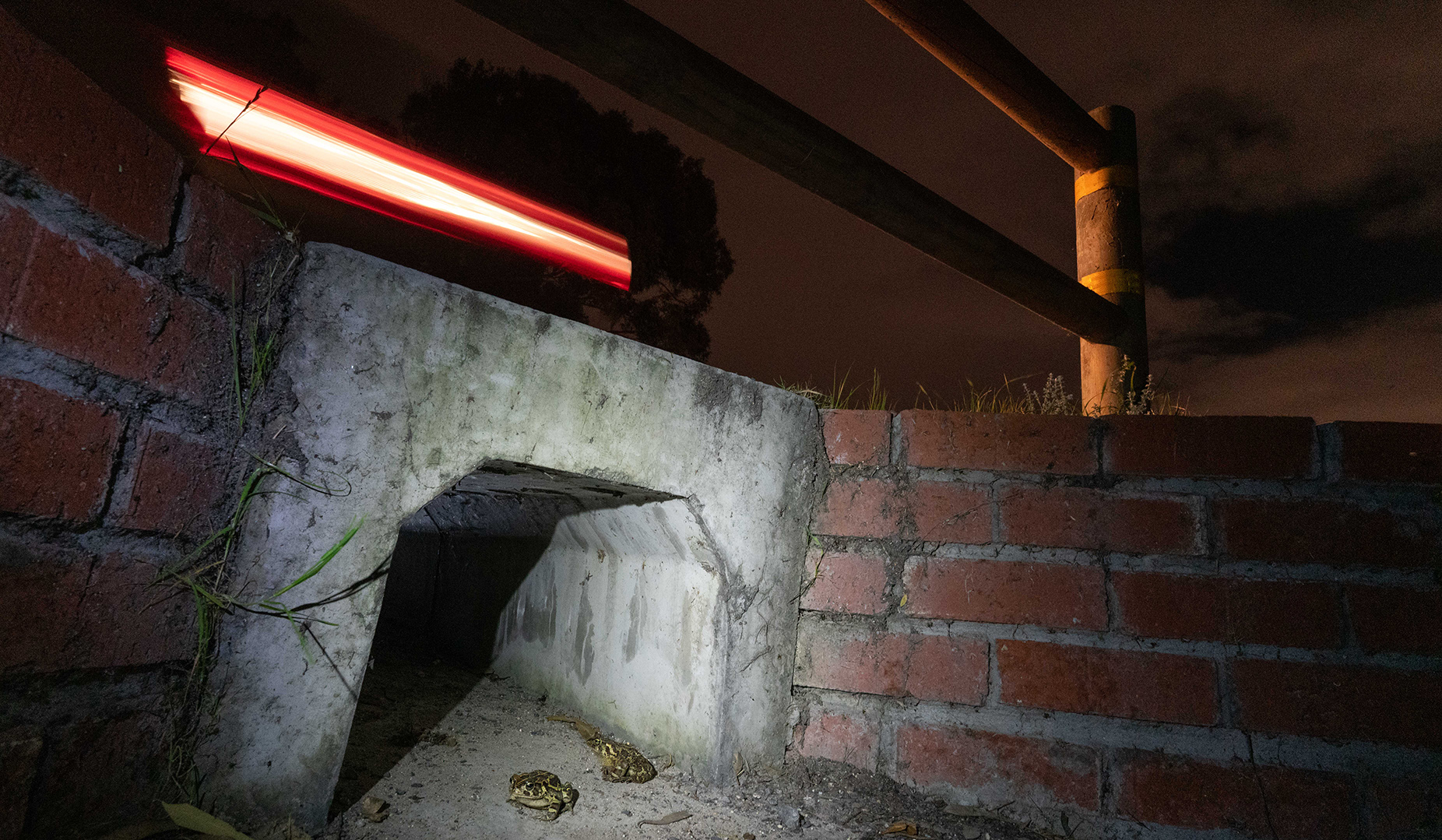
Western leopard toad toads safely pass under the road and avoid being hit by cars during the breeding season, which takes place during August and September. (Photo: Jeremy Shelton)
“The road has been placed straight through the core buffer zone, inner buffer zone and breeding pond — where breeding toads spend the majority of their time during the breeding cycle. The placement of this road in the proposed location will eventually result in the local extinction of the WLT and potentially other species. For this reason, ToadNUTs is extremely opposed to the road in its current location,” said the group in a report.
While road traffic remains a large threat, resulting in the death of hundreds of toads each year, especially during the breeding season when they migrate to and from breeding sites, the toads also face other threats.
When they finally manage to reach their breeding sites, some of these sites have pollutants in the water, predatory fish (such as barbel), and invasive floating plants and reedbeds which reduce and degrade the habitat.
Climate change is also a huge threat to the toads (as predicted by Measey and Tolley, 2011). This will come in the form of harsher conditions in which they live and move for the most part of the year (their over-summering areas), with desiccation of the toads and a decrease in available food being a major factor.
Roberts said that with most climate change models indicating a drying up of the Western Cape, fewer breeding ponds will be available for the toads. DM







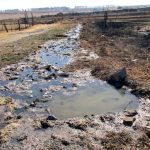











 Become an Insider
Become an Insider
Comments - Please login in order to comment.